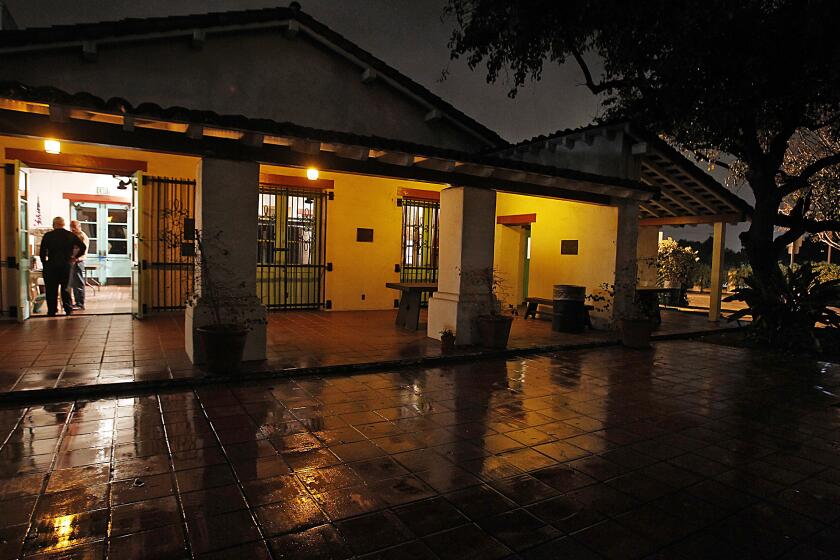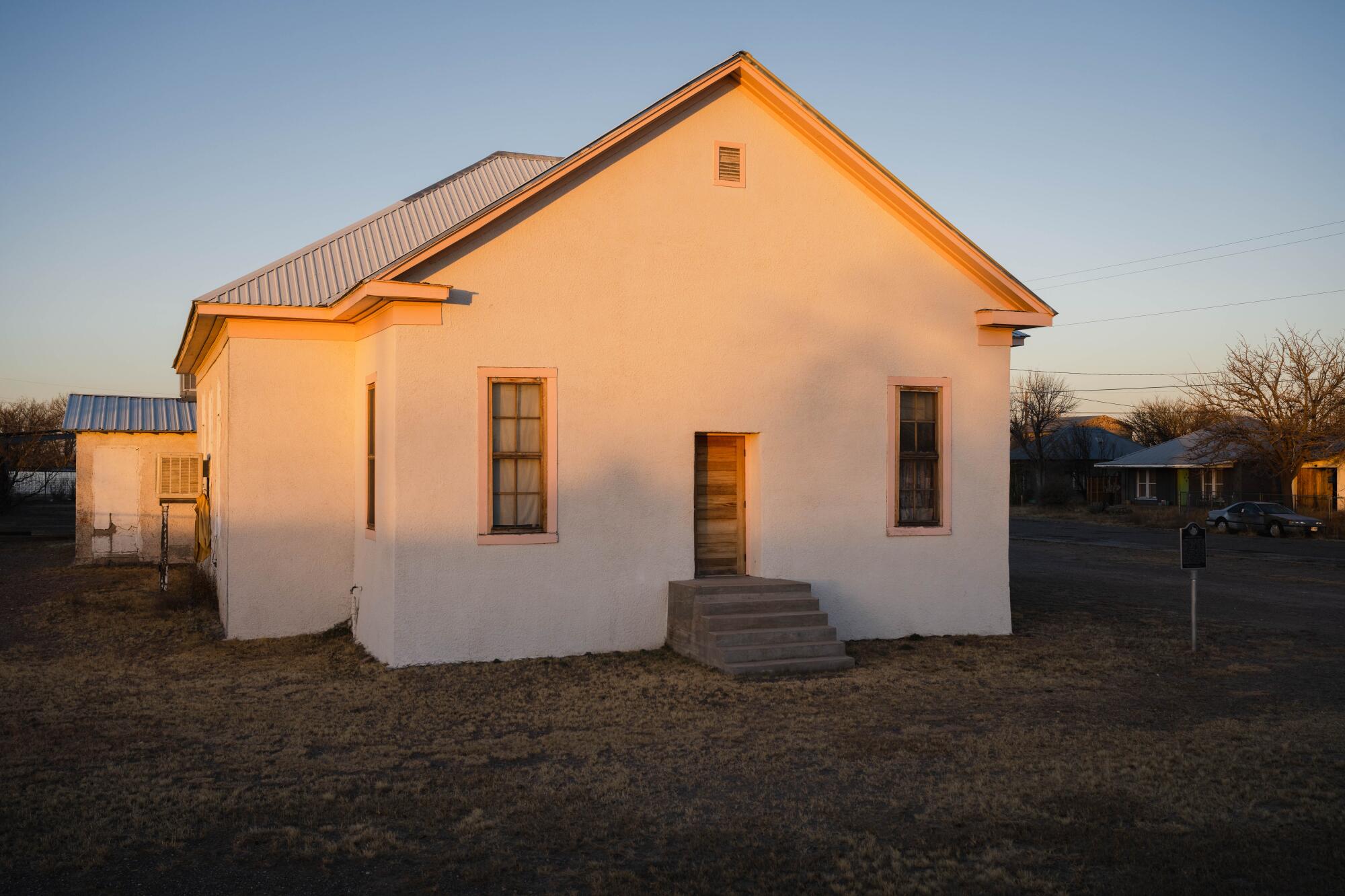
- Share via
MARFA, Texas — Hiding in plain sight on a dusty corner of this remote west Texas town, the Blackwell School stands as a lasting reminder of what Mexican American students endured during decades of segregation.
“I learned about racism here in Marfa,” said Jessi Silva, 73, who attended the school as a child in the 1950s and 1960s.
Sitting in the schoolhouse last month, Silva gestured to a wooden paddle she said teachers used to spank classmates for speaking Spanish.
Opened in 1909 as a three-room “Mexican school,” Blackwell expanded to half a dozen buildings, educating more than 4,000 children before it closed in 1965.
“Students were told to speak only English on campus,” reads a state historic marker outside the stucco and adobe school, which is now a museum. “Spanish words written on slips of paper were buried on the grounds in a mock funeral ceremony.”
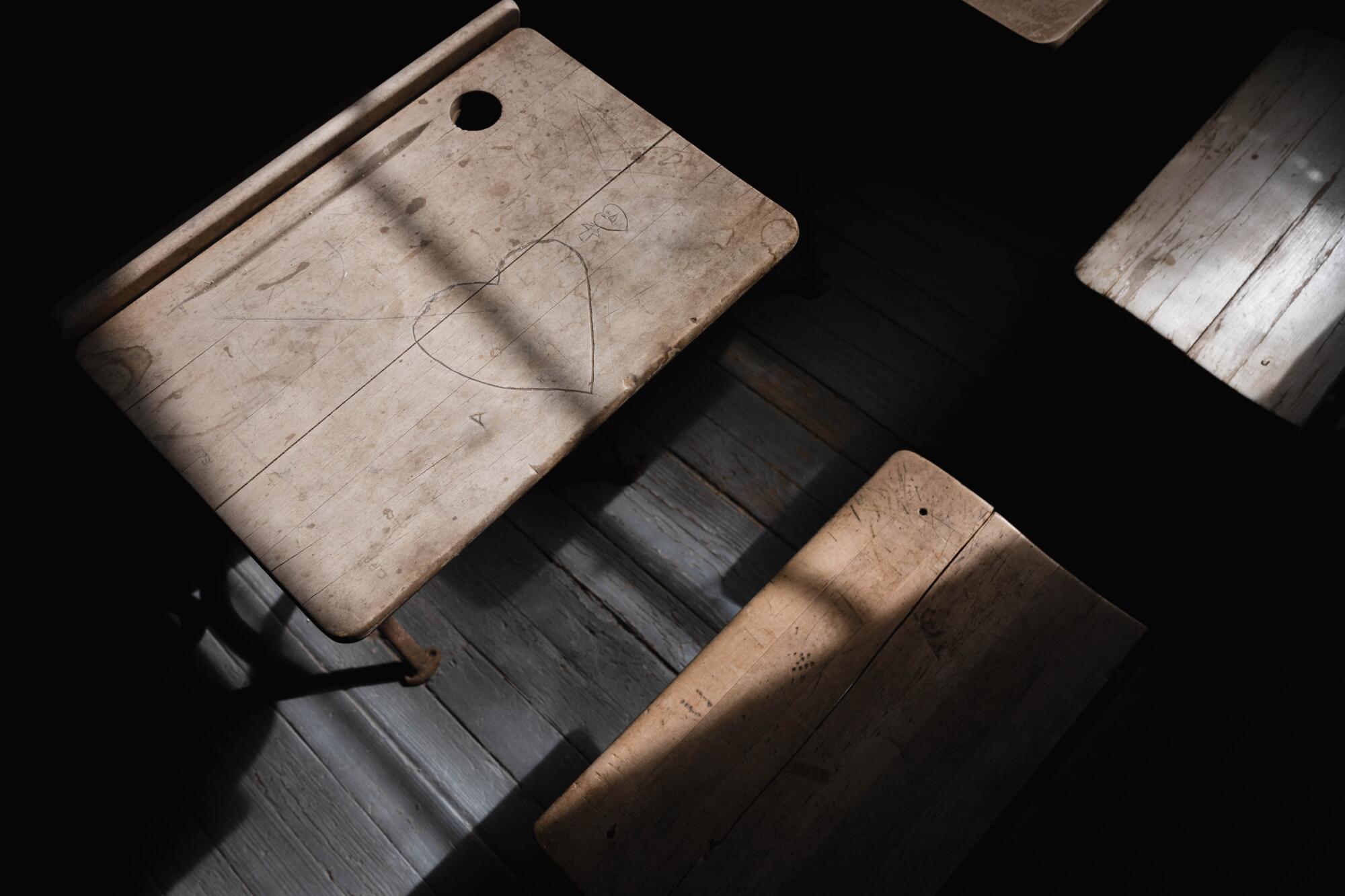

In 1954, Silva’s favorite English teacher, Mrs. Evelyn Davis, organized the mock funeral for “Mr. Spanish.”
The school’s namesake, former Principal Jesse Blackwell, had promoted academic competitions in Spanish to leverage students’ fluency. But Davis, who had previously taught German migrants’ children, feared she hadn’t enforced English speaking enough.
“One of the other teachers came into our classroom and wrote the word ‘Spanish’ on the blackboard, gave each one of us a small piece of paper and told us to write the letters that we saw on the blackboard,” Silva recalled.
Afterward, the teacher collected the slips of paper “and then they marched us all out to the flagpole.”
“They already had a hole dug, and they had this box,” Silva recalled. “They put all the students’ papers in that box and said that we can all vote to do away with the Spanish language. Therefore, we were burying ‘Mr. Spanish.’ And we were no longer allowed to speak Spanish in school.”
- Share via
Once-segregated Mexican American school may become historic site.
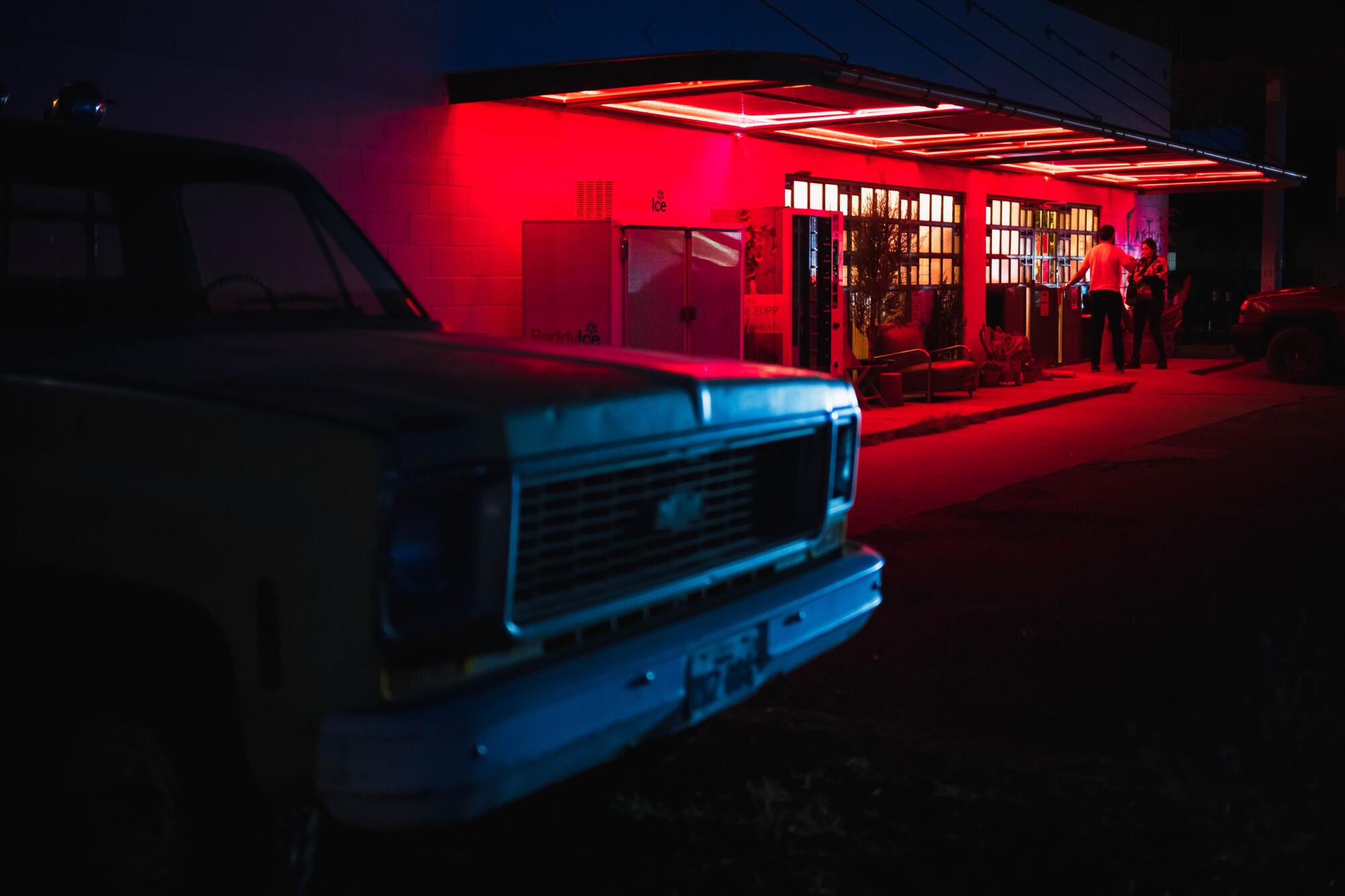
Silva glanced at classmates, who had all lowered their eyes.
“I understood that a right was being taken away from me without an explanation, without a say,” Silva said. “… The bigger students understood it better than I did. I saw it in their faces.”
Resistance to the ban surfaced almost immediately among students. Two student “pallbearers” began to fight during the mock burial, according to Davis’ account, preserved in an exhibit.
“They started pulling against each other in disagreement, which was followed by anger, and then a volley of Spanish curse words,” Davis wrote.
Later that day, one of Silva’s older classmates vowed, “¡Nadie me va quitar que hable el español!” A teacher overheard and the fourth-grader got paddled, as more would in years to come.
Silva returned home and explained to her parents what had happened — in Spanish. Her father was a truck driver, her mother a homemaker. Neither had reached high school or spoke much English. Her maternal grandmother who lived with them spoke only Spanish.
“I couldn’t speak to my grandmother in English because she would scold me. And at the same time I couldn’t speak Spanish at school,” Silva recalled. “We were disciplined on both sides of the street.”
::
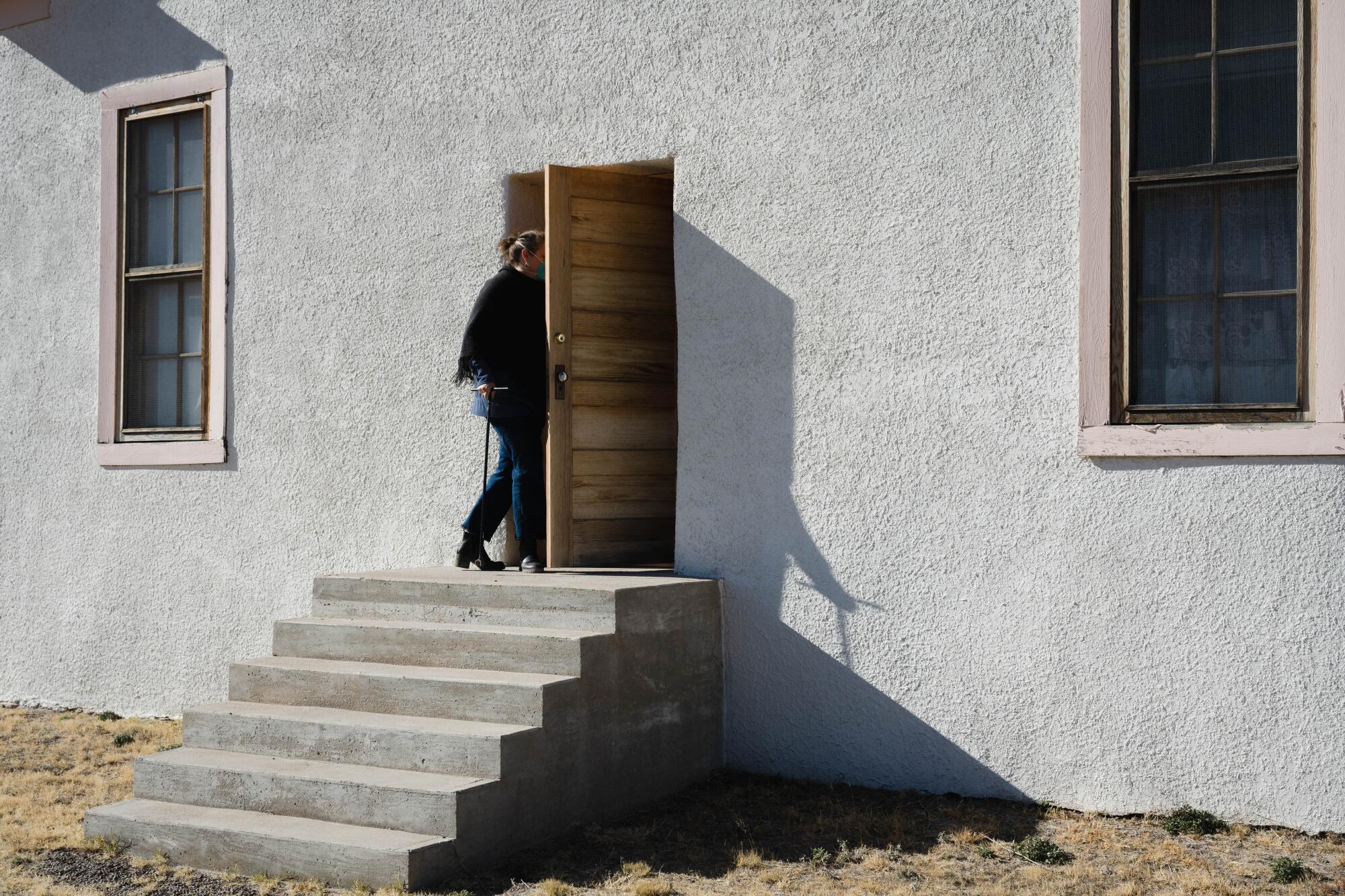
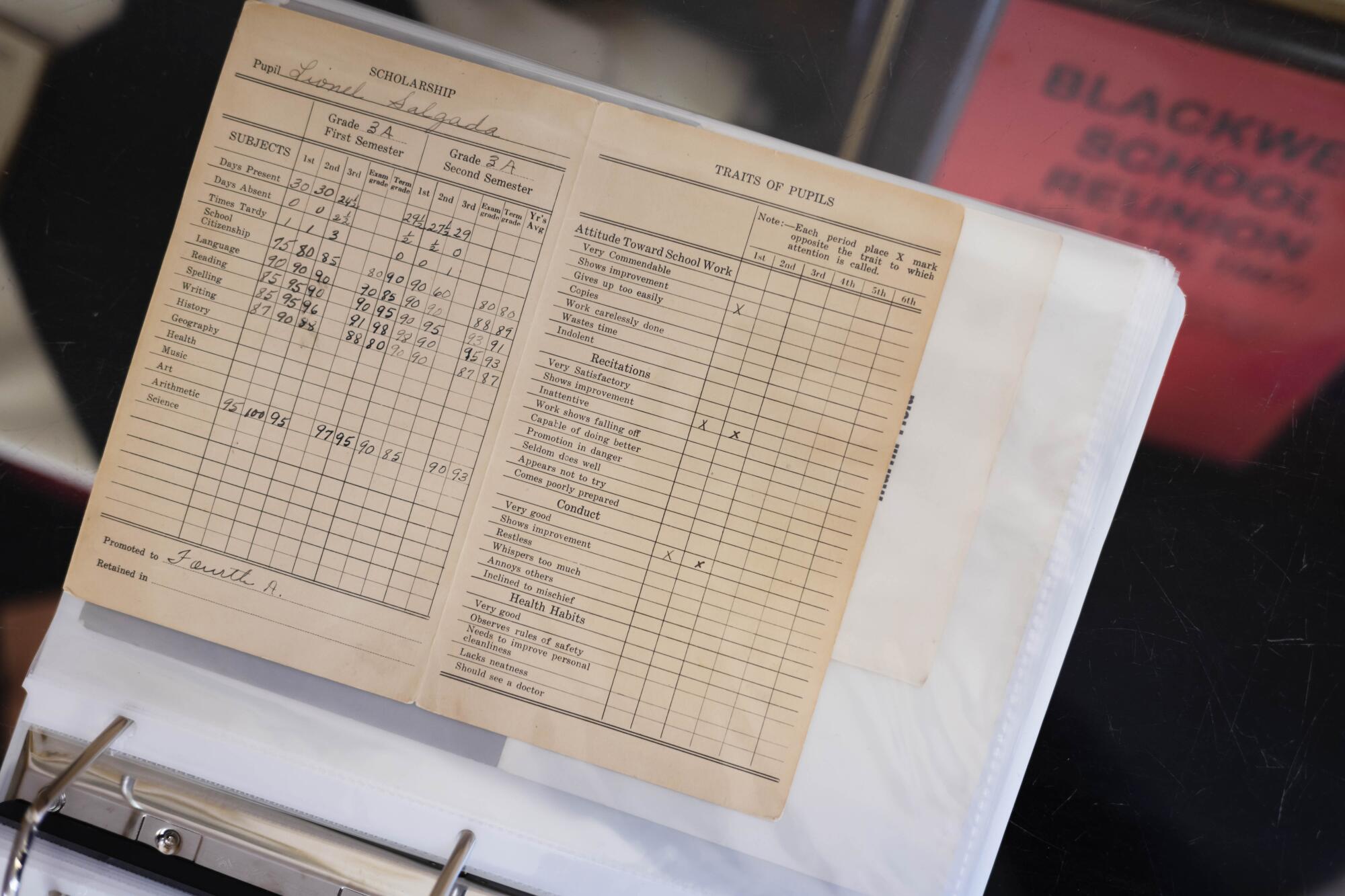
Across the Southwest, former segregated schools for Mexican Americans have been converted into office buildings (Alpine, Texas) and community centers (El Paso) or abandoned (Marathon, Texas).
Blackwell is one of the few still standing, but it nearly suffered a similar fate, prompted by the transformation of Marfa since the 1970s into an artist colony and tourist destination. First, the school district razed outbuildings to make room for new construction. Then the schoolhouse was almost converted into an art gallery.
Some former students, including Silva’s brother in California, resented the school and refused to help save it.
But Silva and others decided their experience, however painful, was vital history — a monument to the type of segregation immortalized by the movie “Giant,” filmed in Marfa in 1956. They persuaded the district to sign a 100-year lease for $1 annually and added the school to state and national historic registers.
A Latino student in L.A. Unified is more isolated along racial and economic lines than in any other large California school system, 15-year study finds.
Unlike segregated schools for Black students, segregated schools for Latino students have not been designated national historic sites, part of the national park system, with the boost in federal funding, staffing and tourism that can bring. Advocates, including Silva, hope to change that.
“It is one of the best maintained structures still in existence from that era,” said Kyle Groetzinger, a spokesman for the National Parks Conservation Assn., which has worked with Silva and other Blackwell alumni. “... What sets it apart from other places: It’s still standing because people took a stand for it.”
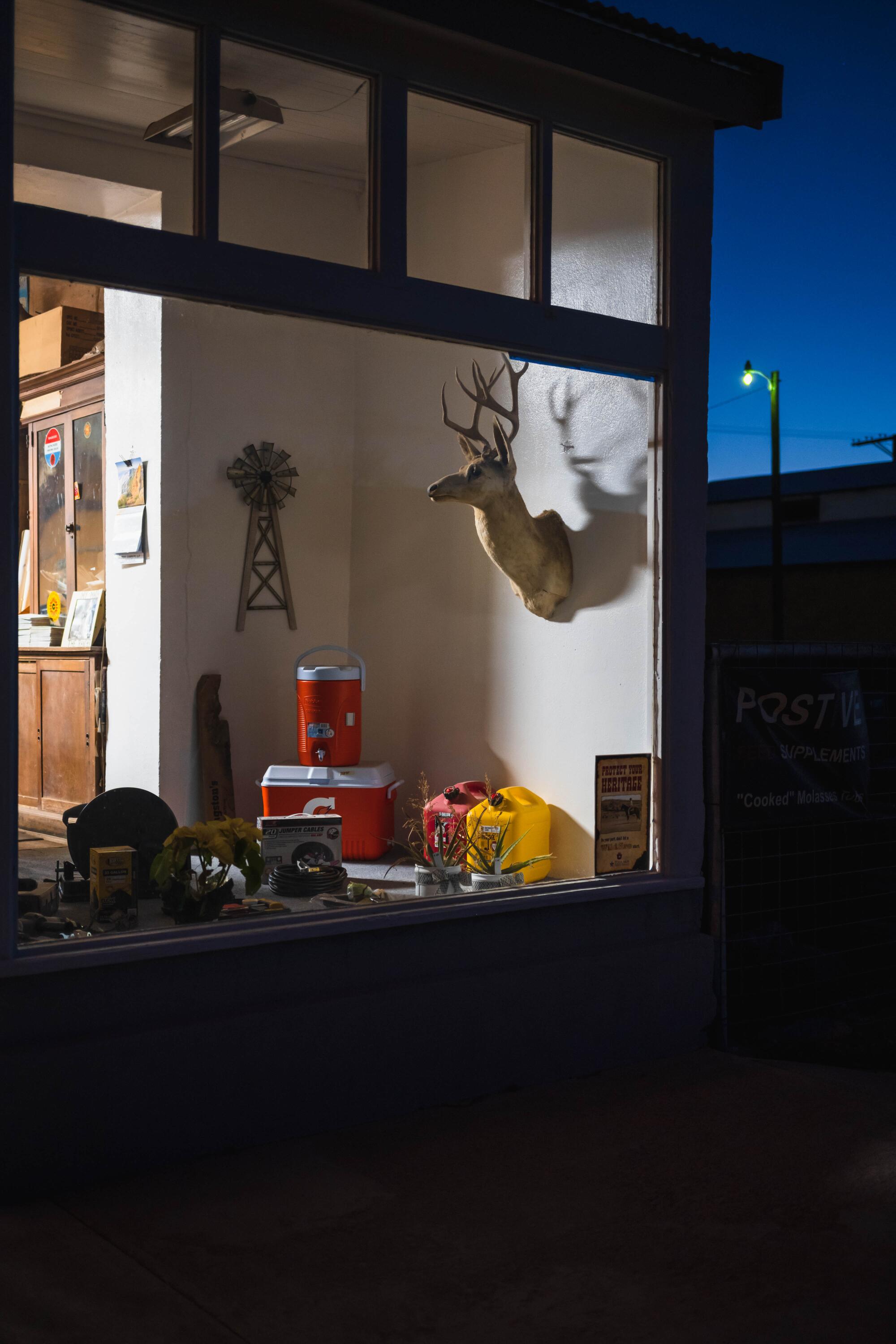
With support from California Democratic Sen. Alex Padilla and Texas Republican Sen. John Cornyn, the Senate is expected to pass legislation turning Blackwell into the first national park of its kind. In December, when the House passed the bill, Rep. Teresa Leger Fernandez (D-N.M.) spoke about attending a similar segregated school.
“This is simply part of our history, and we must recognize it and understand it,” she said.
Given the age and health of former Blackwell students, there’s pressure to act.
“We’re losing them, so there’s an urgency,” said Gretel Enck, president of the nonprofit Blackwell School Alliance. “We have an obligation to elevate this site, to tell these stories.”
::
Blackwell was built on the Latino side of town, south of the railroad tracks. It offered classes from first to eighth grade. Former students remember using secondhand books and sports equipment from Marfa Elementary, the school for white students.
Marfa High was technically integrated, but in the days before Brown vs. Board of Education, the 1954 Supreme Court decision that ended legal segregation in schools, many Latino students never made it that far.
It would take years for Marfa officials to enforce Brown and another landmark Supreme Court ruling, Hernandez vs. Texas, which established that the Constitution’s 14th Amendment protects the civil rights of all racial or ethnic minorities, not just Black Americans.
‘I remember seeing signs at restaurants, “No Blacks and Mexicans allowed.” I remember being told, “You can’t go there because it’s an Anglo restaurant. You can’t go there because that’s an Anglo church.”’
— Jessi Silva, who attended Blackwell School as a child in the early 1950s
Marfa eventually built a new elementary school and closed Blackwell. But for the first few years, the school district still assigned white and Latino students to separate classes.
Even after legal segregation ended, Latino students still faced economic barriers. Mario Rivera, 78, the retired county treasurer, and his 10 siblings were among the many who missed school when their parents pulled them out to pick cotton. For many at Blackwell, eighth grade meant graduating to work.
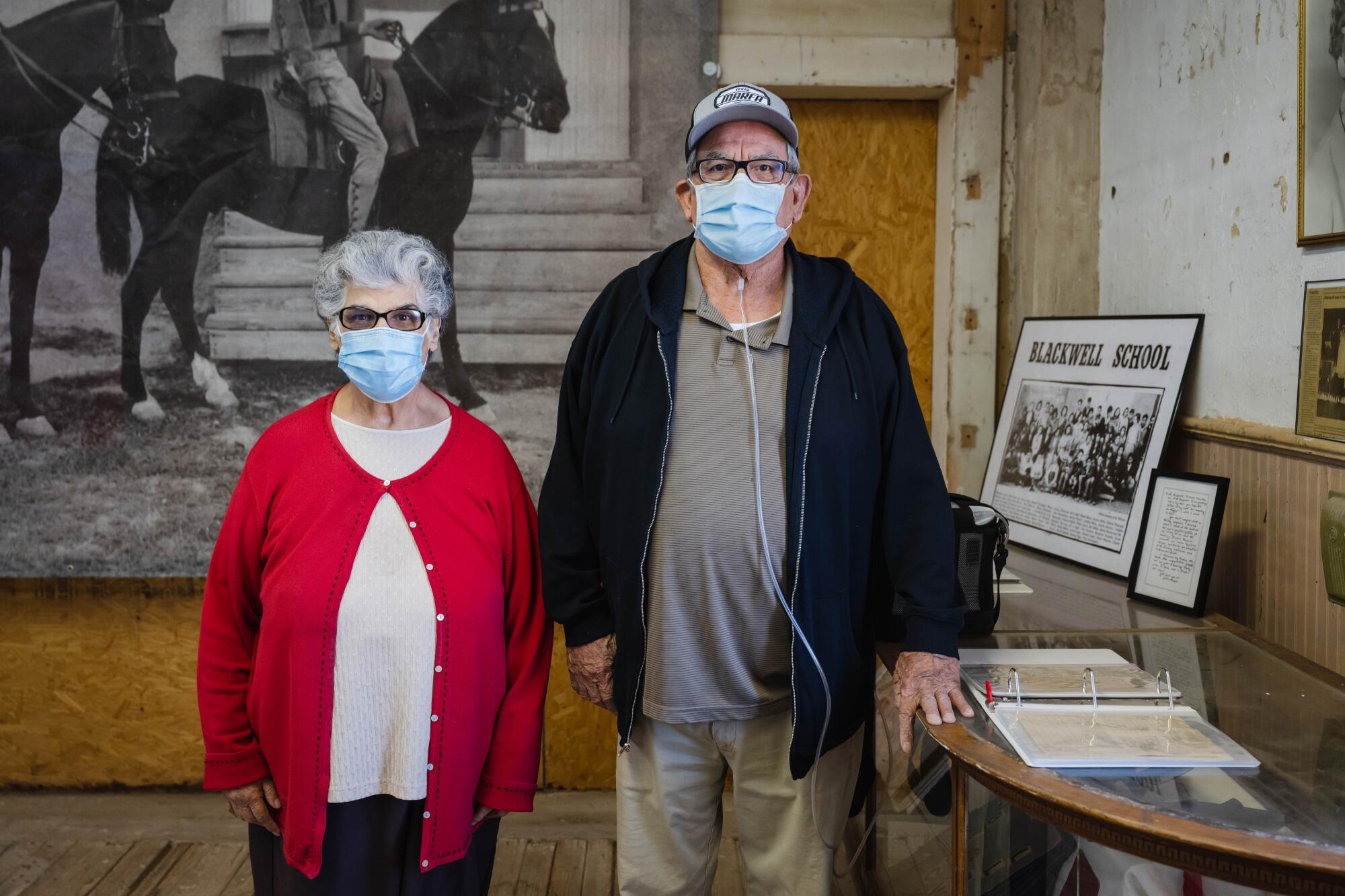
Wealthier Latino families sent children to St. Mary’s Catholic School. But that cost $4 per student per year, too expensive for Silva’s father. Some years he earned just $700 trucking, less when white ranchers refused to pay him, she said.
“I was always hungry here,” Silva recalled. “I’d be hungry before the bell rang at lunchtime. I was so hungry that I would eat my pencils, the pencil lead, the graphite,” on the way to school, she said.
When Silva was in third grade, her father got hired at a Heinz plant in Tracy, Calif. They rented a house in an integrated neighborhood where Silva and her three siblings attended public schools.
“I was surprised to see the different kinds of students they had, the races,” Silva said — not just white but also Black, Chinese and Filipino students.
Silva still remembers sitting down to dinner after her father’s first California paycheck.
“It was a big plate. It had salad and a piece of meat and vegetables. And I was sitting there looking at the plate like this was the most beautiful thing I had ever seen,” she said.
“Come!” her mother said. “Eat!”
Silva hesitated.
“I didn’t want to mess it up, because I might never see it again,” she said.
Two years later, in 1959, her paternal grandmother got sick and the family moved back to Marfa.
::
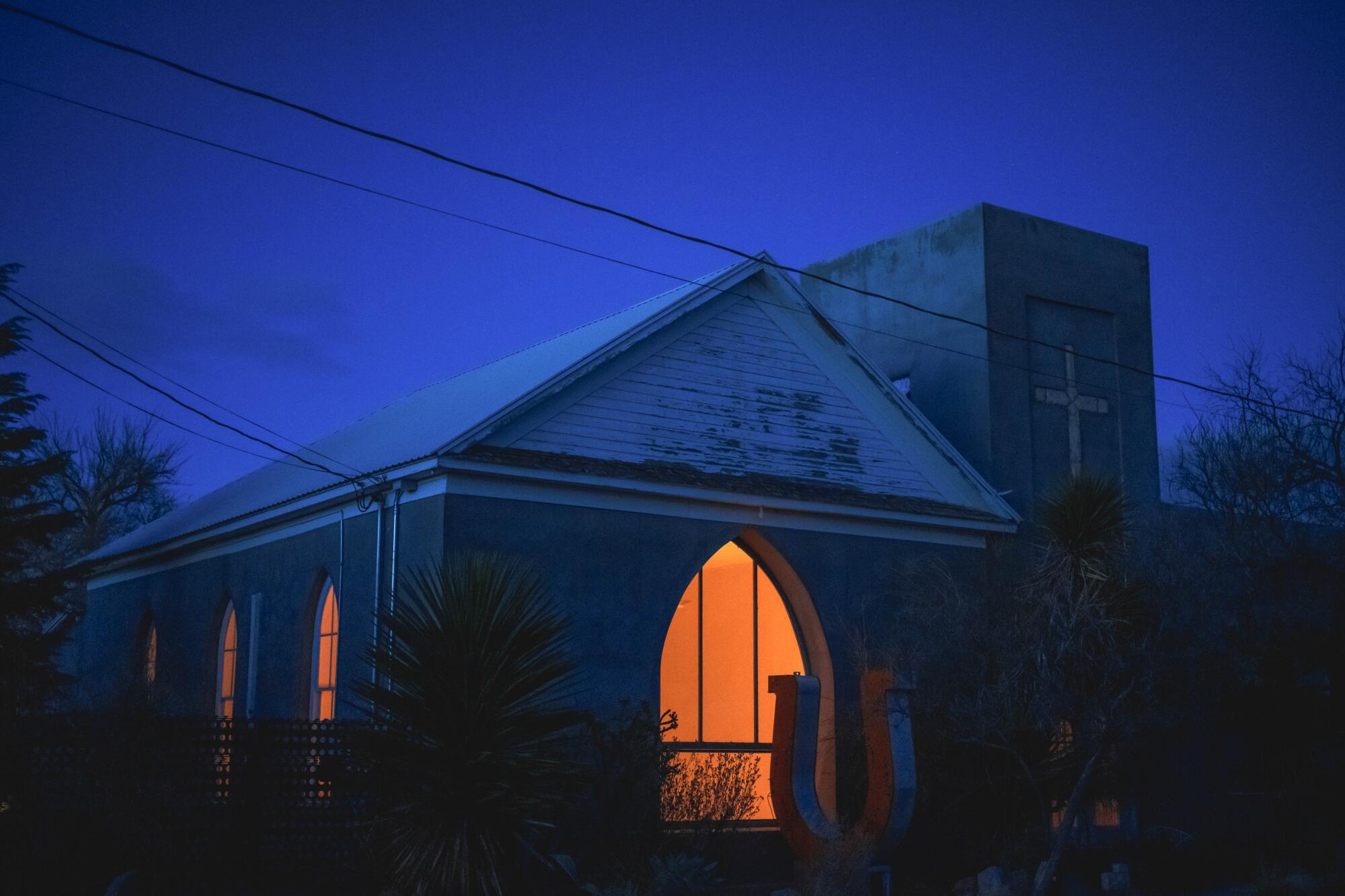
“It was miserable,” Silva recalled of her Marfa homecoming. “Being told that we couldn’t go to certain places here in Marfa because Hispanics weren’t allowed.”
In Texas, Latinos were technically considered white, according to the Treaty of Guadalupe Hidalgo that had ended the Mexican-American War. But in practice, they were still segregated.
The promise of peace is one we should all take to heart because it’s so fragile. So what happened at Campo de Cahuenga took on an outsize role in how Southern California remembered its history.
When Blackwell sports teams traveled to compete, restaurants and motels wouldn’t serve them, said Joe Cabazuela, 77, a Blackwell graduate. The student-athletes would eat takeout and sleep on the floor of the school gyms where they played. Cabazuela could go to Marfa’s Texas Theater to see Spanish-language movies, but across the main street at the Palace Theater, he had to sit in the balcony.
The town had separate Catholic churches for white and Latino residents; the local pool had a “Mexican Day.” To this day, a barbed wire fence at the cemetery separates the town’s white and Latino dead.
“I remember seeing signs at restaurants, ‘No Blacks and Mexicans allowed,’” Silva said. “I remember being told, ‘You can’t go there because it’s an Anglo restaurant. You can’t go there because that’s an Anglo church.’”
Only a couple of Black men lived in Marfa, Silva said, and Black visitors knew not to stay overnight, that it was a “sundown town.”
Interracial dating was taboo, recalled Cabazuela. “But we still did. We did it at night. You couldn’t go out in public.”
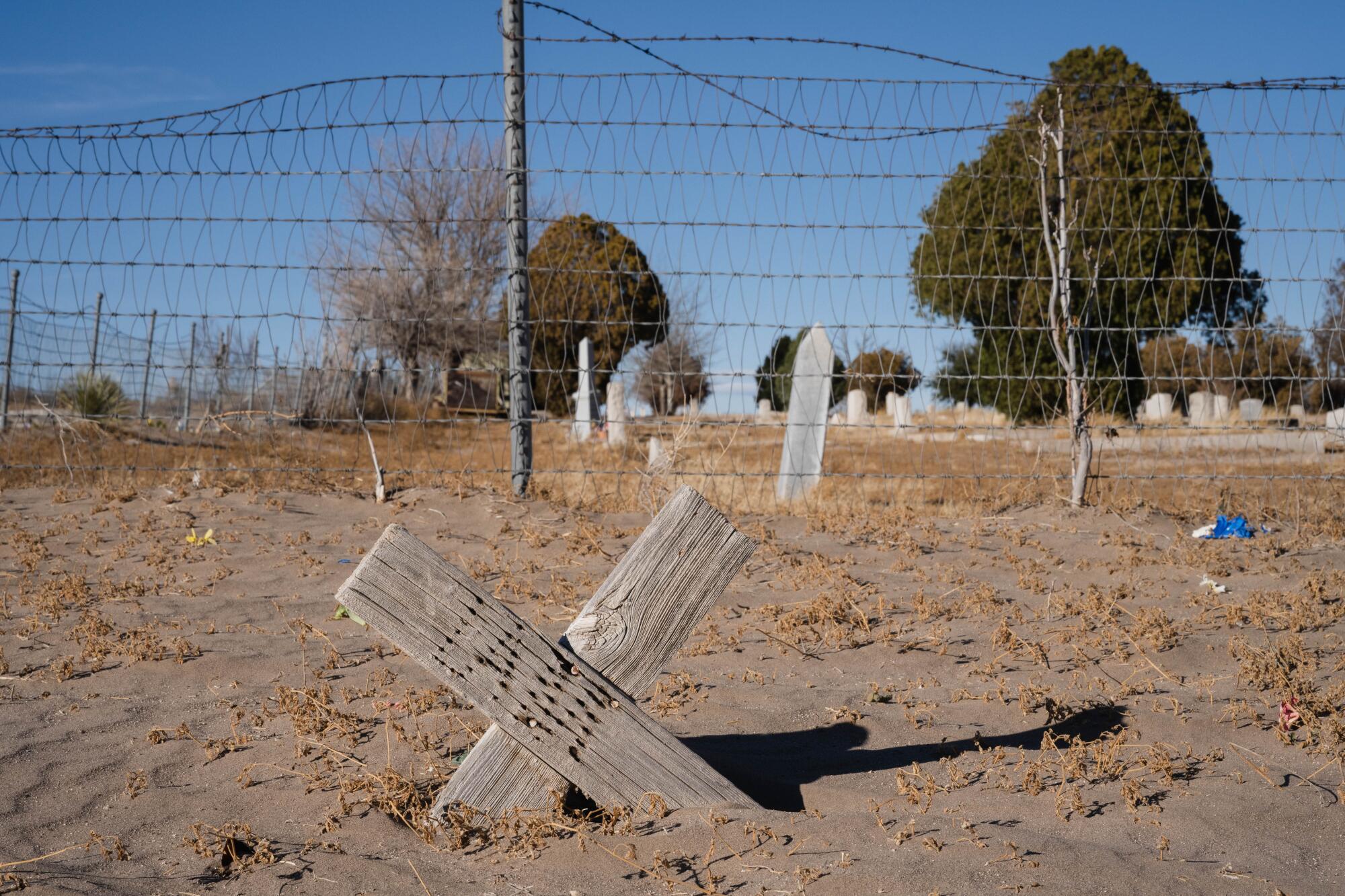
Polly Boelter, another Blackwell student, has heard former white classmates from Marfa High and some Latinos, including her brother, insist their town was never segregated.
“There’s a lot of deniers now,” said Boelter, 83, who moved to Los Angeles, married and worked as a longtime teachers assistant at North Hollywood High.
That’s why Blackwell needs to be preserved, Boelter said: It’s proof.
“These things really did happen.”
::
The first legal victory against U.S. segregation was in San Diego County in 1930, when Mexican American parents successfully sued the Lemon Grove district to integrate. But years passed before the rest of California’s “Mexican” schools, whose calendars remained shaped by harvest seasons for citrus and walnuts, were integrated.
A decade after the Lemon Grove case, more than 80% of the state’s Mexican American students still attended segregated schools. It took another lawsuit by parents in Westminster to end the practice in 1947.
Sen. Padilla, 48, grew up attending San Fernando Valley schools that were largely Latino, still integrating through busing. He remembers what he realized while traveling with his team to play baseball against other high schools: “Noticing the difference in quality of facilities, quality of life in different neighborhoods compared to my own.”
“That opened my eyes to the inequities that still existed years after integration of schools,” Padilla said.
Three months into the job, Sen. Alex Padilla is trying to introduce himself to as many Californians as possible and touting his progressive values.
Padilla said his teachers never punished him for speaking Spanish. But he later learned that they had discouraged older students, including Los Angeles City Councilman Gil Cedillo and former Mayor Antonio Villaraigosa. That’s why Padilla co-sponsored the Blackwell legislation.
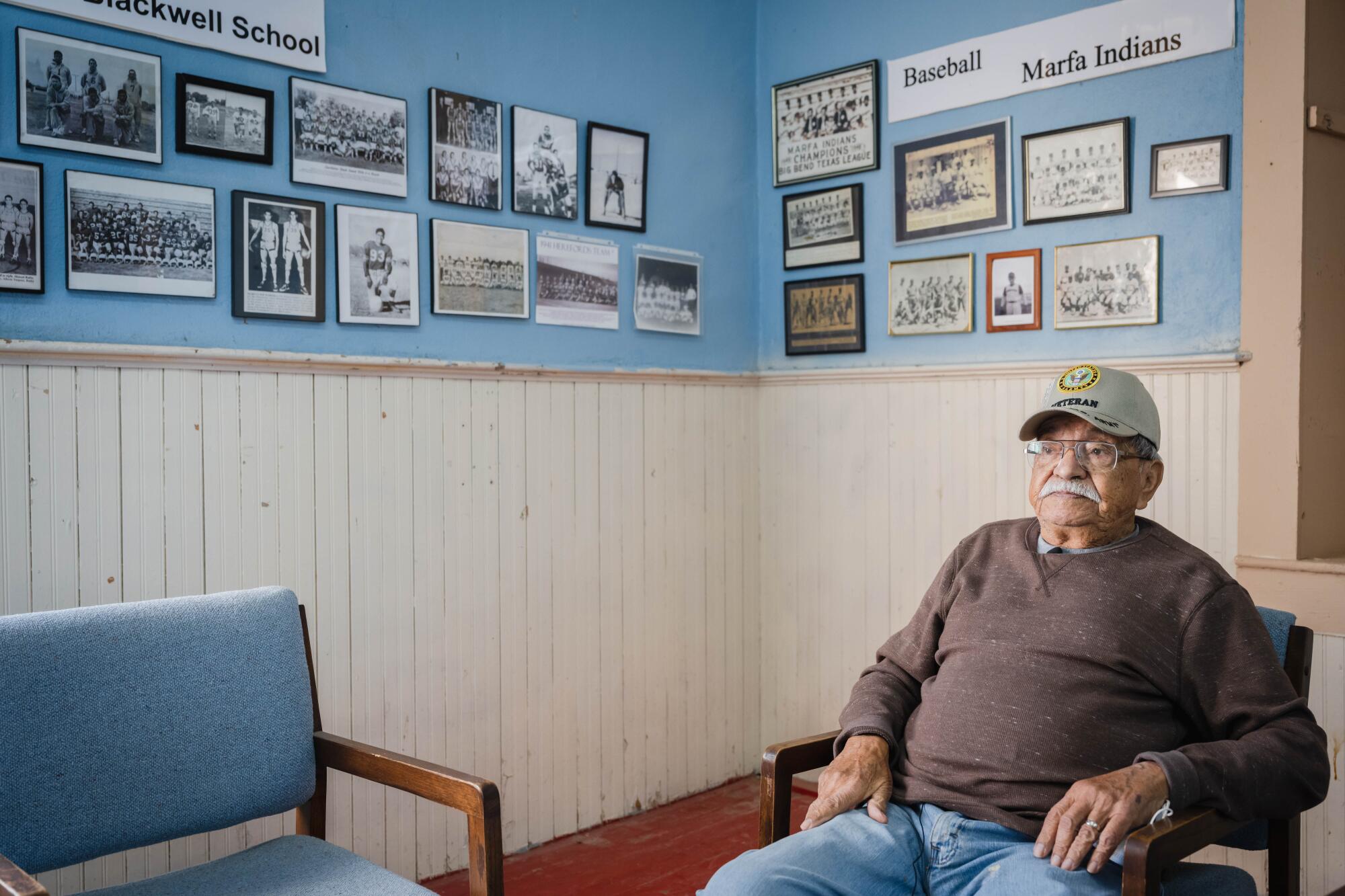
“The Blackwell school stands as an example of how the powers that be, once upon a time, tried to suppress our community and our culture,” he said. “... If you suppress language and you suppress the culture, you suppress identity.”
Padilla and his wife are raising their three sons — ages 7, 8 and 14 — bilingual. Preserving Blackwell as a national landmark will help remind the next generation of their heritage, he said. It could also serve as a reminder of the perils of economic segregation at a time when UCLA studies show the most de facto segregated public schools in the country for Latinos are in California — followed by Texas.
“To appreciate where we are and where we’re going and where we need to go, we need to understand where we’ve been,” Padilla said. “We need to tell the complete story.”
::
Silva became a medical assistant, settled in Stockton and worked at Kaiser Permanente for 45 years before retiring to Marfa.
Some Blackwell graduates’ descendants don’t speak Spanish. But Silva’s children and eldest grandson do, and sometimes even call asking her to teach them more.
Reviving Spanish was on Silva’s mind when she organized a Blackwell reunion in 2007.
“We came up with the idea of putting a Spanish dictionary in a mock little coffin, buried again,” she said.
Silva’s classmate, the one who had been paddled for vowing never to stop speaking Spanish, joined former classmates near the site of the old flagpole. As the crowd cheered, she unearthed the plywood coffin and extracted the dictionary.
“¡Yo tengo el español!” she cried, holding the dictionary aloft.
The memory made Silva smile as she sat in the school last month.
“It was a symbol,” she said. “We’re bringing it back out. We’re bringing our heritage out.”
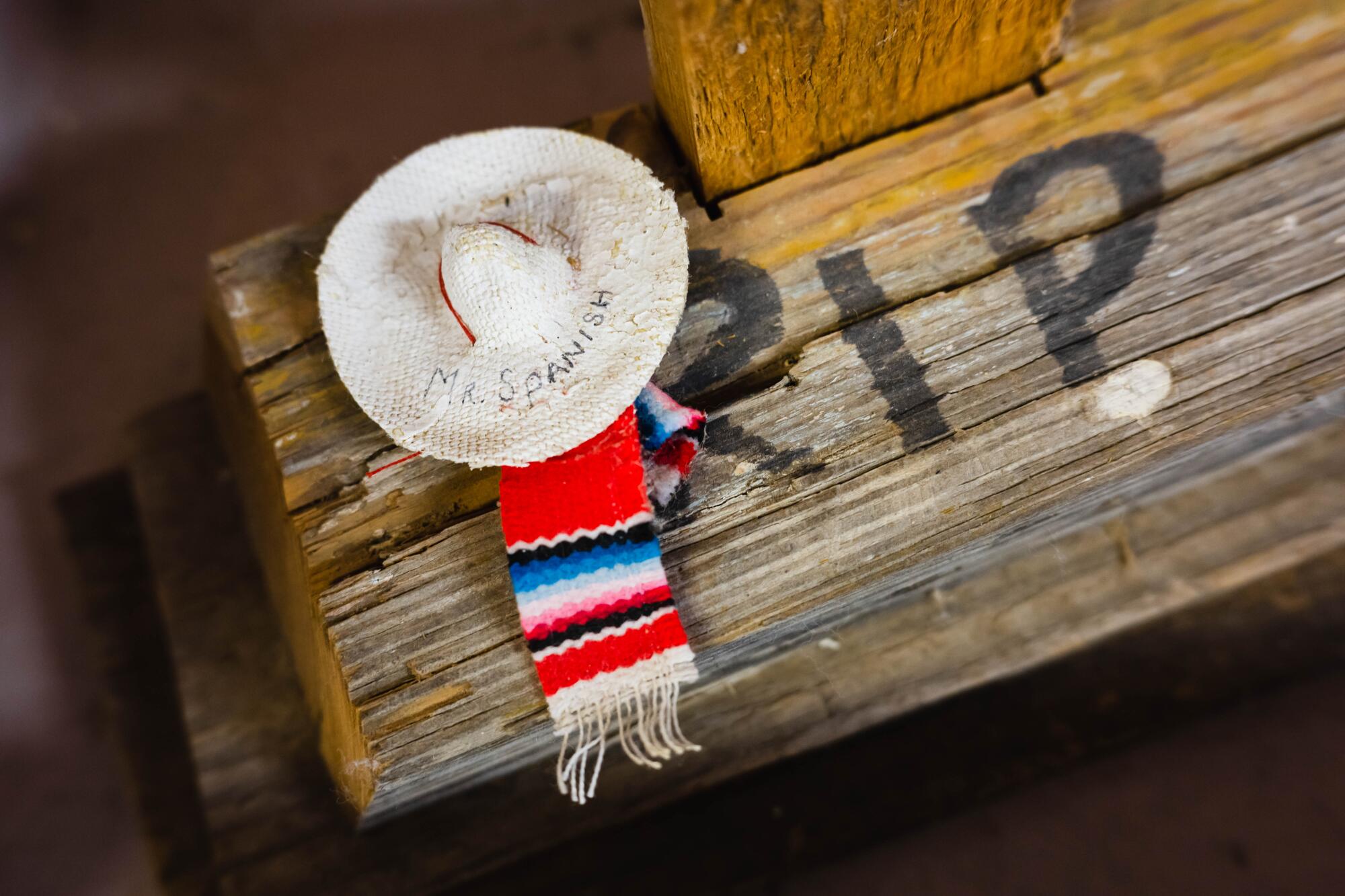
More to Read
Sign up for Essential California
The most important California stories and recommendations in your inbox every morning.
You may occasionally receive promotional content from the Los Angeles Times.




